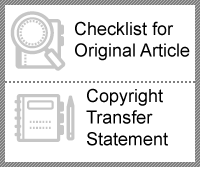| abstract |
| Background Renewable energy is becoming increasingly important as a solution to alleviate power instability through the decentralization of power grids. Vertical axis wind turbines are advantageous in urban areas due to their simple construction, low maintenance costs, ability to operate in various wind directions, and low noise levels. However, they have not been fully utilized due to low efficiency, necessitating improvements in blade design. Biomimicry, which draws inspiration from nature as seen in the designs of Shinkansen trains and humpback whale blades, can be an effective solution. This study aims to find the optimal shape for small wind turbine blades through biomimicry and inspiration from nature.
Methods This study conducted a performance comparison experiment by 3D printing various blade shapes. It has been studied by inductive reasoning through several cases. The blades used in the experiment were based on the NACA0011 profile, and the comparison experiment was conducted by gradually transforming them into the sweet back angle type and the dihedral angle type.
Result It was observed that while the rectangular blade based on the NACA0011 profile took 110 seconds to exceed the wind speed, the swept-back type took 80 seconds, and the dihedral angle type took only 70 seconds. Therefore, it was confirmed that the modifications inspired by seagull wings resulted in faster rotational speed increases, making it the most efficient among the compared blades.
Conclusion This experiment confirmed that the dihedral angle type blade, inspired by seagull wings, was the most efficient. However, it still took 70 seconds to reach the required wind speed, indicating difficulties with self-starting. Therefore, additional research is needed to explore solutions for this issue. |
|
|
| Key Words |
| 후퇴각 블레이드 디자인, 상반각 블레이드 디자인, 생체 영감, Swept blade design, Dihedral blade design, Biological inspiration |
|
|
|
 |
|






